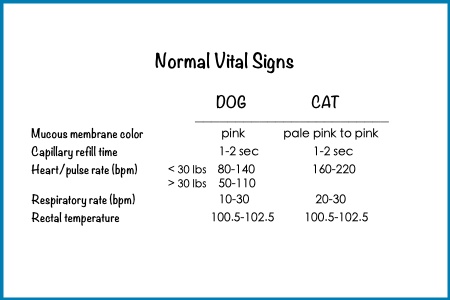Yikes! I have an Emergency!
We’ve all had them. The emergency in the middle of the night with our new silly puppy or the one on Christmas Day with our elderly sweet cat. Having had the opportunity to train and work in many veterinary emergency clinics across the country, I’ve noticed a few things that are ever present…emergencies are stressful, scary, expensive and always unplanned. Here we will dive into one of my favorite worlds. The world of veterinary emergency medicine so that you can be better prepared the next time you are faced with one.
When should you be alarmed, postpone everything (including that gorgeous Christmas dinner) and make a run for the nearest ER clinic? The first thing to keep in mind is that anytime you are concerned and just can’t continue with your day until you have your companion animal examined, no matter what clinical signs your animal is exhibiting, take them in for an emergency visit. It will be worth it for your peace of mind. Classic signs of an emergency situation for cats and dogs include the following:
- Blue or pale gums
- Persistent increased respiratory rate (normal resting RR=20-30 breaths per minute)
- Panting in cats (panting in cats is never normal!)
- Pacing with obvious discomfort
- Persistent vomiting
- Excessive watery diarrhea (especially in puppies and kittens)
- Inability to urinate
- Large wound/fractures
- Bloated, painful abdomen especially with retching
- Extreme lethargy for more than 12 hours
- Anorexia for more than 24 hours
- Two or more seizures
- Suspected ingestion of toxin (especially anti-freeze, Tylenol/acetaminophen for cats, rat poison, poisonous plants, harmful human foods, etc) Call Animal Poison Control Center at (888) 426-4435, if you are concerned.
Being familiar with normal vital signs is key in determining whether or not you are faced with an emergency.
So that an emergency doesn’t feel so overwhelming and scary, it’s a great idea to have a few items prepared ahead of time.
- MEDICAL HISTORY. Having your companion animal’s medical record (including a list of current medications with dosages) organized and accessible is very helpful. This information may be very handy for the emergency veterinarian who is meeting you and your Buddy for the first time. They will appreciate having access to this information.
- MONEY. How are you going to pay for the emergency? Unfortunately, unlike in many european countries, most people in the United States do not have pet health insurance. Setting aside cash or a credit card for an emergency is key. Many emergencies cost hundreds, if not in the thousands, to treat so knowing how it will be financed ahead of time can make a huge difference. In my experience, the financial side of an emergency can really compound the stress a family experiences. An alternative to setting aside cash or a credit card would be to apply for Care Credit in advance…just to have it ready, if needed. Care credit is a credit card to be used for medical purposes only.
- FIRST AID. Preparing a First Aid Kit can give you the ability to act as a “first responder” in the event the emergency clinic is more than 30 minutes from your home or inaccessible due to bad weather or no transportation. Taking a CPR and first aid class are priceless.
- WHERE TO? Where is the nearest trustworthy emergency clinic? Not all clinics are created equal. Ask your veterinarian, friends and relatives who they trust. Unfortunately, bedside manner is not a good indicator of whether or not a doctor is a good one. This makes it very difficult for families to know if their cat or dog is in good hands. Again, getting a referral from your veterinarian will be key. One characteristic that I’ve noticed over the years is that emergency clinics that are also part of a referral service with specialists usually provide quality care. And the reason is this: they are learning facilities with interns and residents and have daily case rounds. This creates accountability. There’s a lot of collaboration between doctors, experience and knowledge in a large group. Once you have your emergency facility picked out, map it and post it in a handy spot for yourself and your pet sitter.
- TRANSPORTATION. How will you get to the emergency clinic? For most it’s really easy, hop in the car and go. For others, not so much. For those who don’t drive or have very large dogs, getting to the clinic can be very problematic. Researching pet friendly taxis or making arrangements ahead of time with a neighbor or relative can be very handy in an emergency situation. For transporting large dogs that have lost the ability to walk, having stretcher available (or very large blanket to be used like a stretcher) can be a life-saver.
- LIVING WILL AND EMERGENCY POWER OF ATTORNEY. I understand how difficult it is to imagine what we would do if faced with the possibility that our furry family member may experience a crisis. When in the throws of an emergency, especially a life threatening one, it’s really hard to think straight. So many aforementioned variables have to be decided upon. It’s very helpful to know in advance what kind of medical treatment one desires for their pet. In addition to authorizing basic medical care and establishing a cost limit, a pet living will should also include whether or not you want the following resuscitative efforts for your cat or dog:
CPR
Emergency Surgery (break it down between those that have great outcomes vs those with questionable outcomes)
Tube Placement (Feeding tube, Intubation/Breathing tube with ventilator support)
Blood Transfusion
And always leave this information with your pet caretaker when you are out of town. Animals are still considered property. I’m probably the odd-man-out but I find this fact pretty disturbing. (A blog post for another day!) So, establishing an Emergency Power of Attorney is a great idea so that, if you are unable to, you have someone that you have appointed to act on your behalf. Clinics need authorization from an owner or agent prior to starting medical care. This is critical.
Phew! That’s a lot to think about! It’s much easier to consider all of these variables with a calm heart and clear head. If all of these variables are attended to prior to an emergency, it will be much easier to focus on your beloved pet and staying calm. Remember to leave your emergency plan (including a credit card or plan of reimbursement) living will, emergency power of attorney at home with your pet sitter when you travel. May your cats and dogs remain happy, healthy and emergency free!
Dr. Alicia Harris

